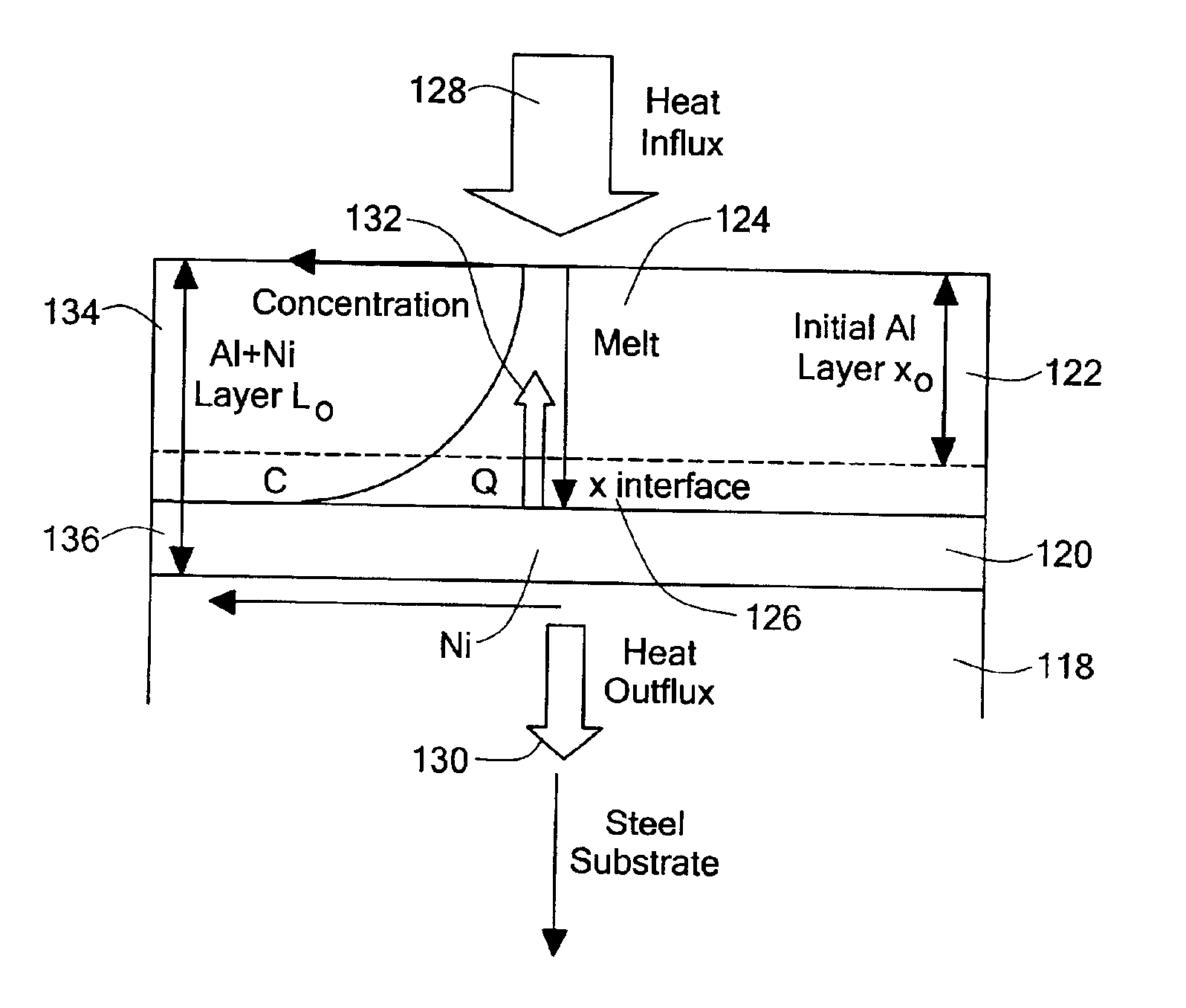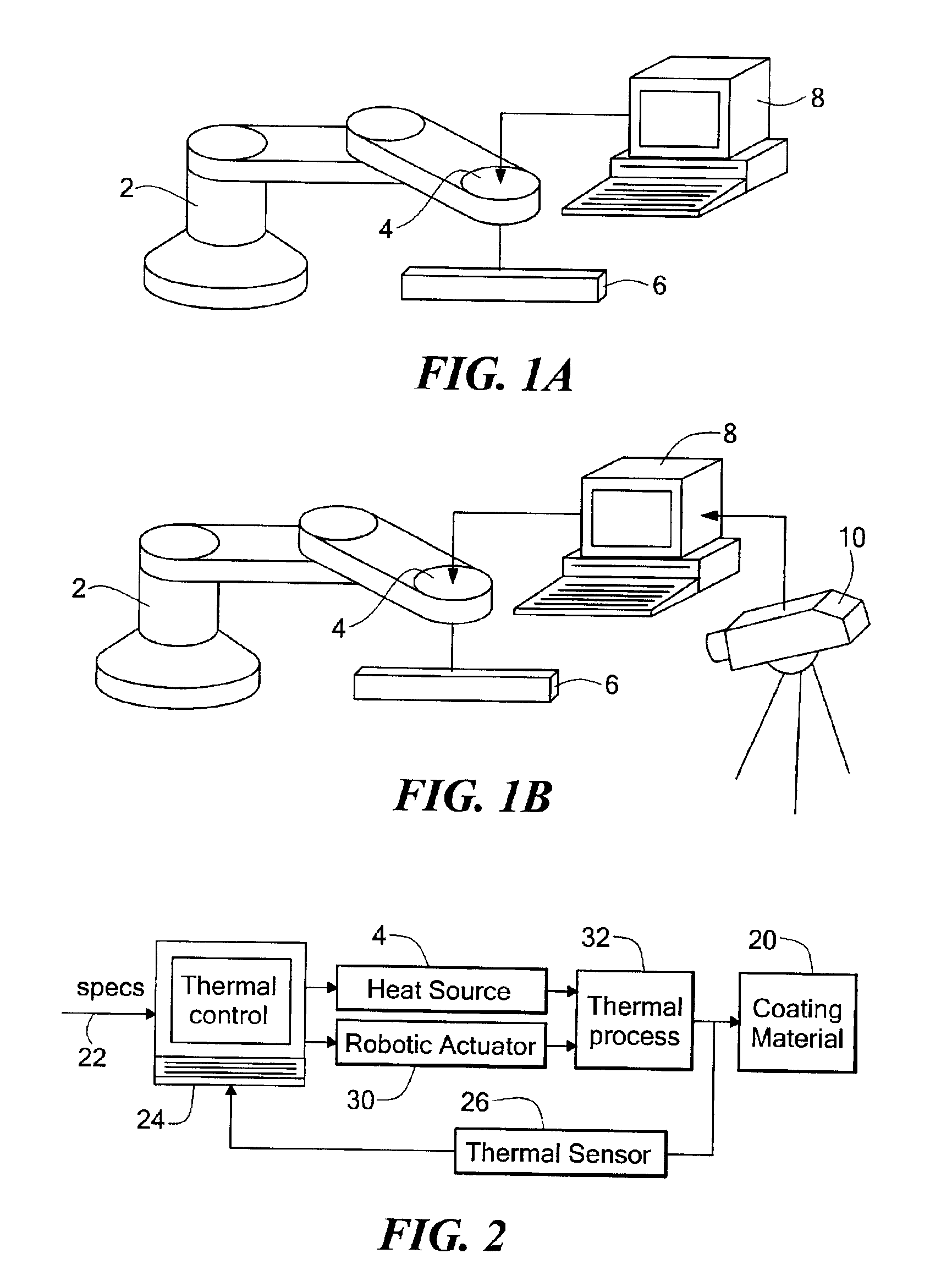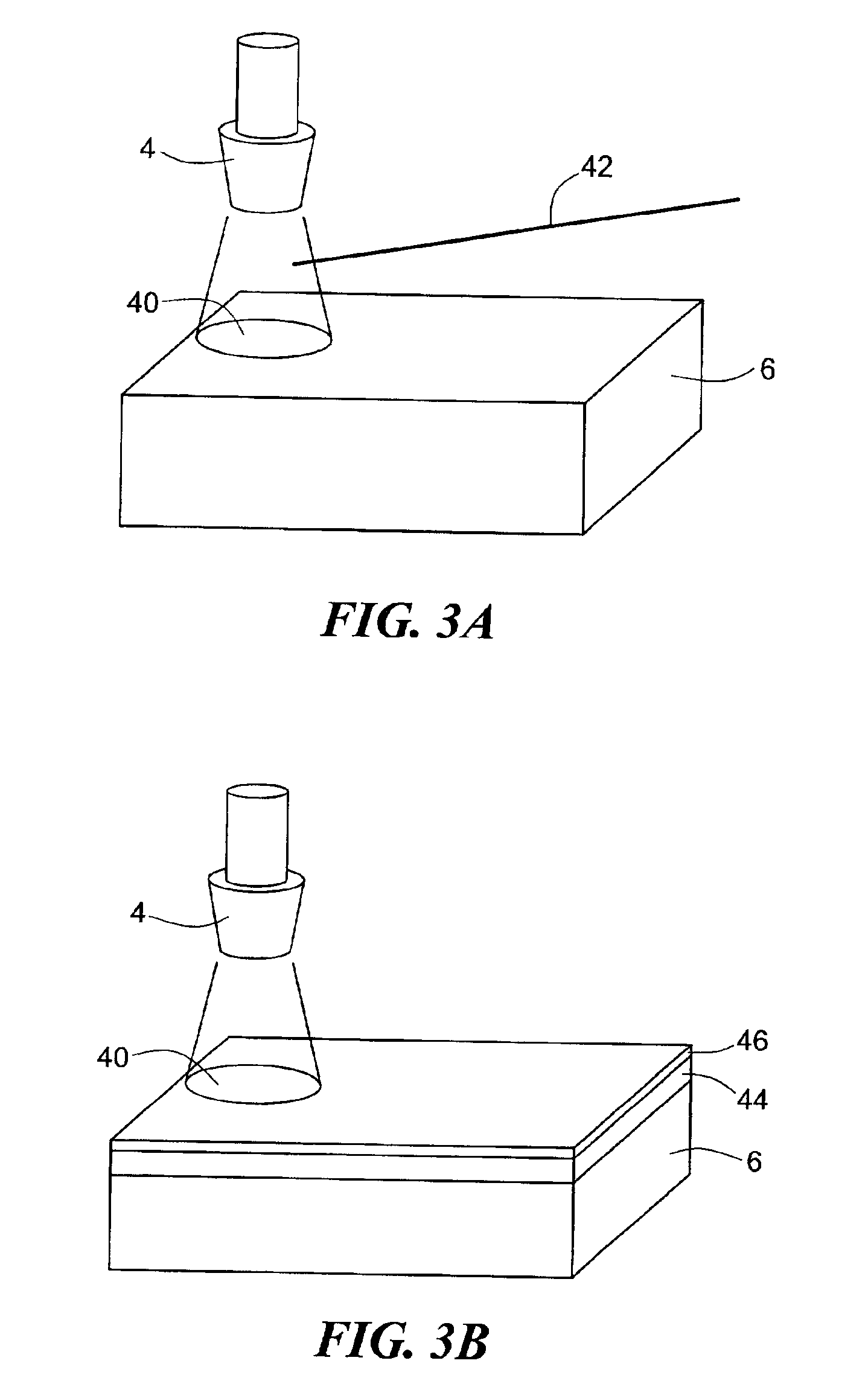Process of forming a composite coating on a substrate
- Summary
- Abstract
- Description
- Claims
- Application Information
AI Technical Summary
Benefits of technology
Problems solved by technology
Method used
Image
Examples
Embodiment Construction
[0031]The present invention relates to a process of fabricating composite coatings on substrates by welding of precursors. The process involves a series of steps, which may each be customized to affect the resultant product. The processes generally involve the preparation of one or multiple precursors, such as a layered sheet or a wire structure. The precursor is positioned relative to the substrate. A portion of the precursor, and possibly the substrate, are heated by a specific heat source to melt some of the metals. The metals are allowed to cool, which the melt that may have reacted while in the molten form. The whole target area of the substrate surface is sequentially scanned by the heat source, sequentially melting and resolidifying a local area. During the process, the power and positioning of the heat source is controlled to obtain the desired characteristics of the coating. Each part of the processes encompasses many choices, discussed further below, leading to the final q...
PUM
| Property | Measurement | Unit |
|---|---|---|
| Fraction | aaaaa | aaaaa |
| Fraction | aaaaa | aaaaa |
| Fraction | aaaaa | aaaaa |
Abstract
Description
Claims
Application Information
 Login to View More
Login to View More - R&D
- Intellectual Property
- Life Sciences
- Materials
- Tech Scout
- Unparalleled Data Quality
- Higher Quality Content
- 60% Fewer Hallucinations
Browse by: Latest US Patents, China's latest patents, Technical Efficacy Thesaurus, Application Domain, Technology Topic, Popular Technical Reports.
© 2025 PatSnap. All rights reserved.Legal|Privacy policy|Modern Slavery Act Transparency Statement|Sitemap|About US| Contact US: help@patsnap.com



